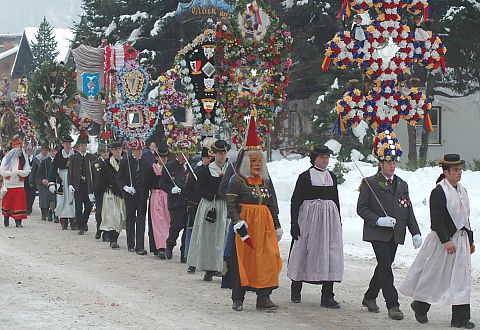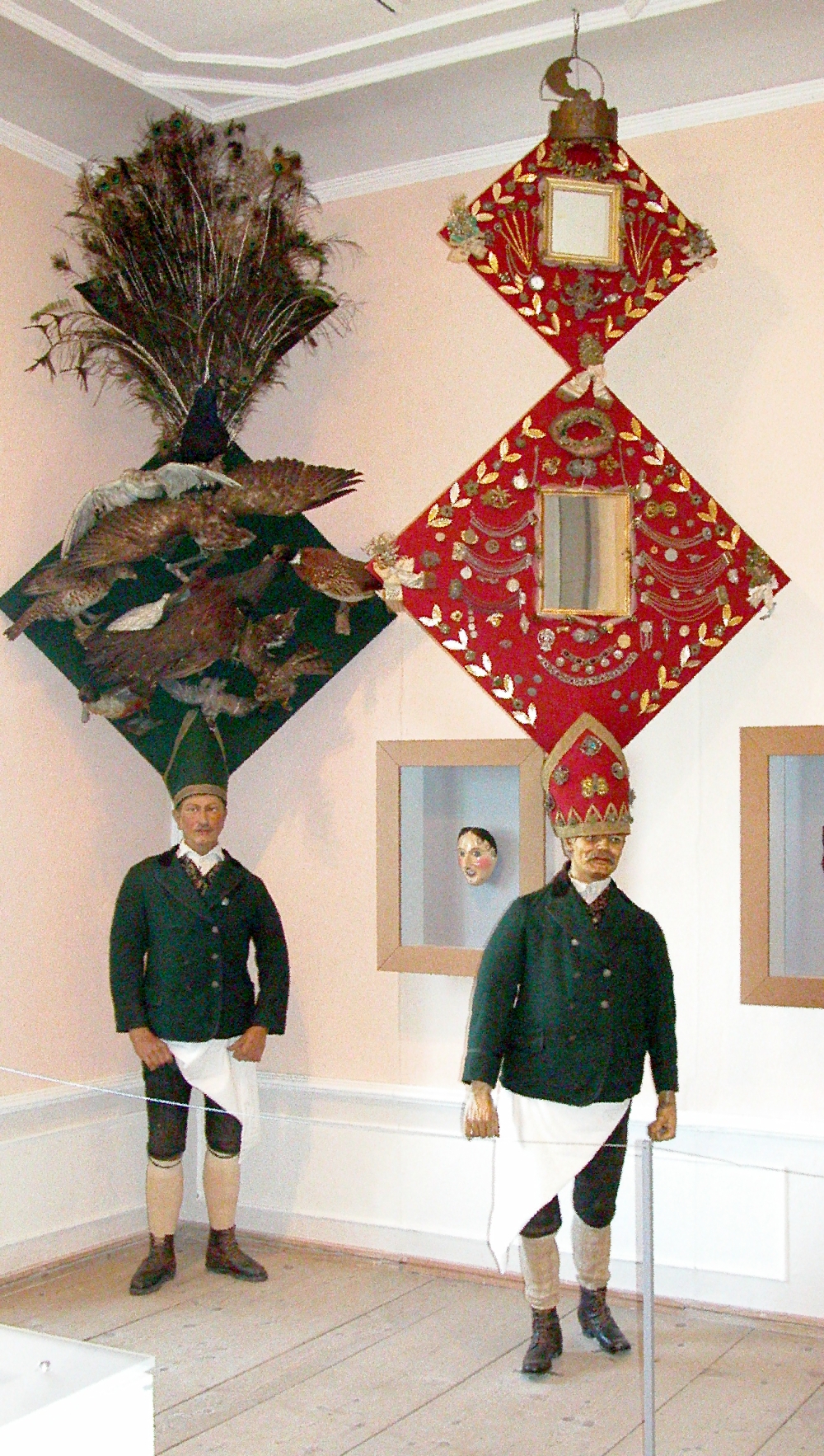Fatalismo Mágico.
Opera about desire and nostalgia in four acts.
Carlos Sandoval & Mariana Castillo Deball
San Lorenzo Tlacoyucan, Milpa Alta, Ciudad de México, 2017-2018
Part of Proyecto Líquido. Deseo, 2016-2018,
a curatorial and artistic research around Mexico City Basin, curated by Jessica Berlanga
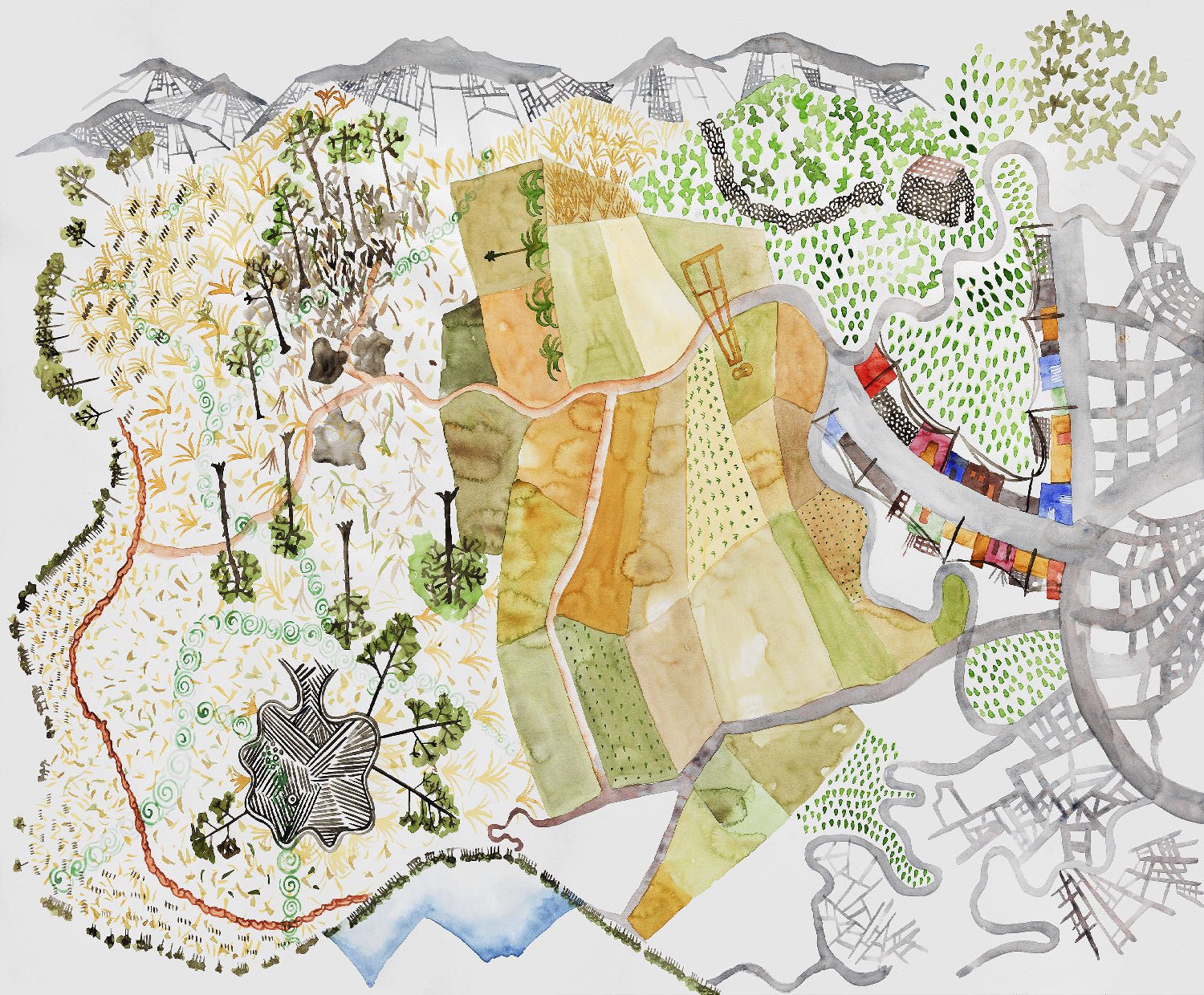
You can count days, weeks, and full moons: but you also count beans and pennies. The size of a tortilla can be calculated by the amount of dough that fits in your hand and you can measure a house with the extension of your own arms. Beyond metaphors and documents, there is knowledge that escapes language, because it has been protected by the body, and has been silently transmitted and transformed with time.
Landscape is not only a stage for events to take place, but also the protagonist. It’s the place where rain is expected, where the sun rises and the afternoon falls, it’s the place where shade doesn’t exist. Fatalismo Mágico parts from four characters that move on four different routes: each of them has a specific knowledge that is related to the environment, but at the same time they all share an integrative, almost symbiotic approach to it. The morilleros, the oracle tortillera, the sweeper and the yerbero can measure, heal, interpret and read. Each one of the characters travels its own landscape-route. The audio presented here is the voyage of four different characters in the landscapes they inhabit.
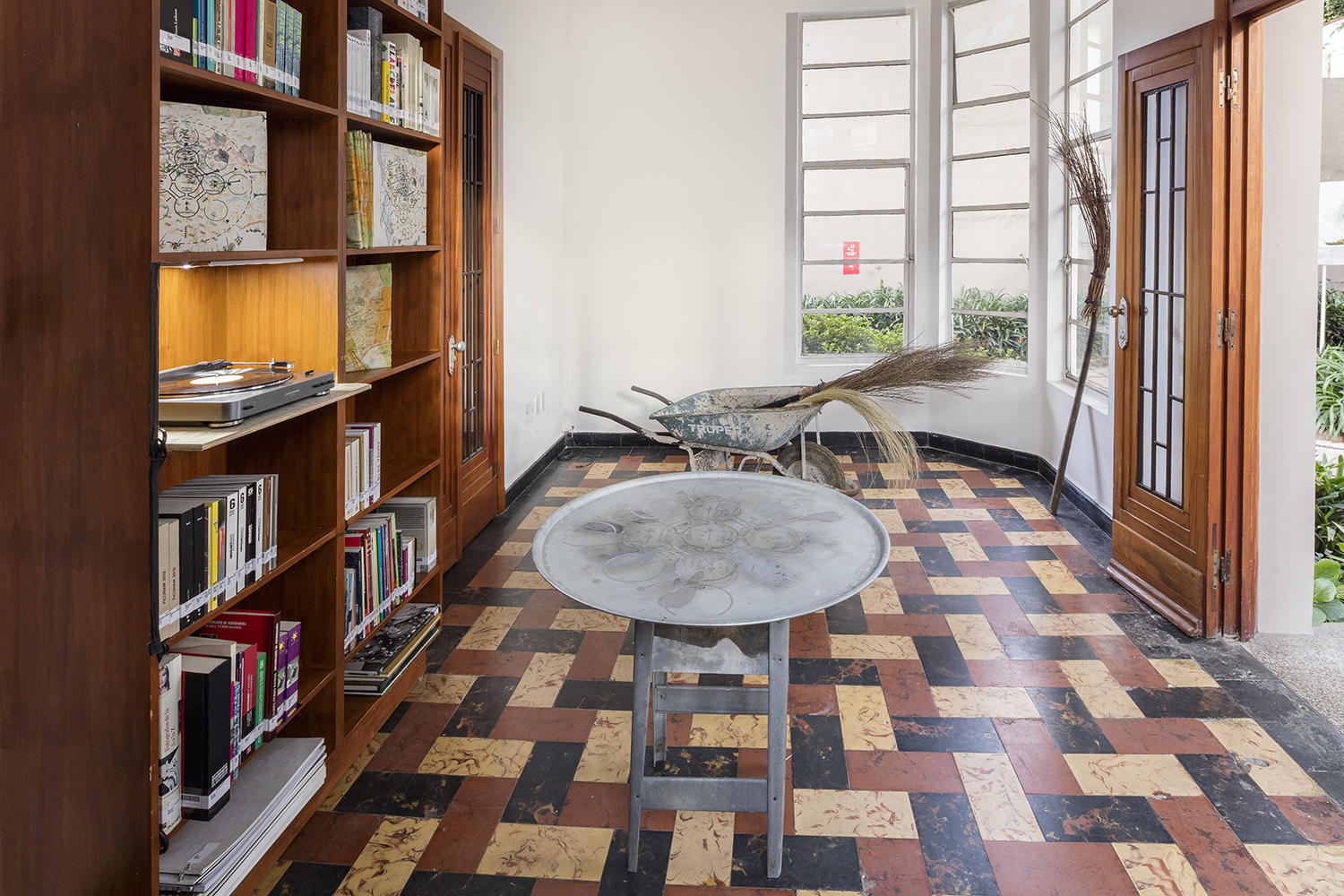
Fatalismo mágico:
Ópera sobre el deseo y la nostalgia en cuatro actos
Carlos Sandoval & Mariana Castillo Deball
Photo: Abigail Enzaldo
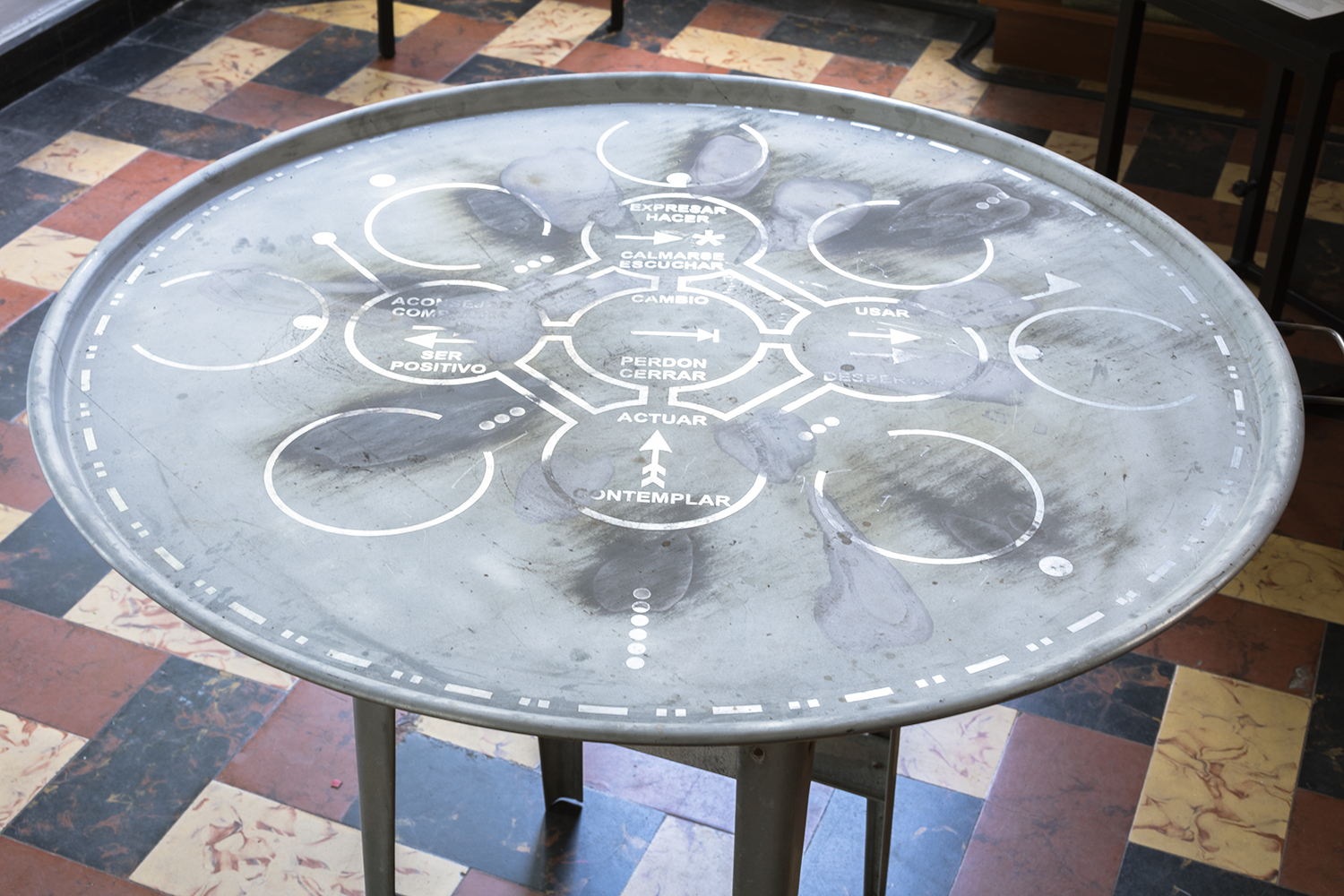
Fatalismo mágico:
Ópera sobre el deseo y la nostalgia en cuatro actos
Carlos Sandoval & Mariana Castillo Deball.
Photo: Abigail Enzaldo.
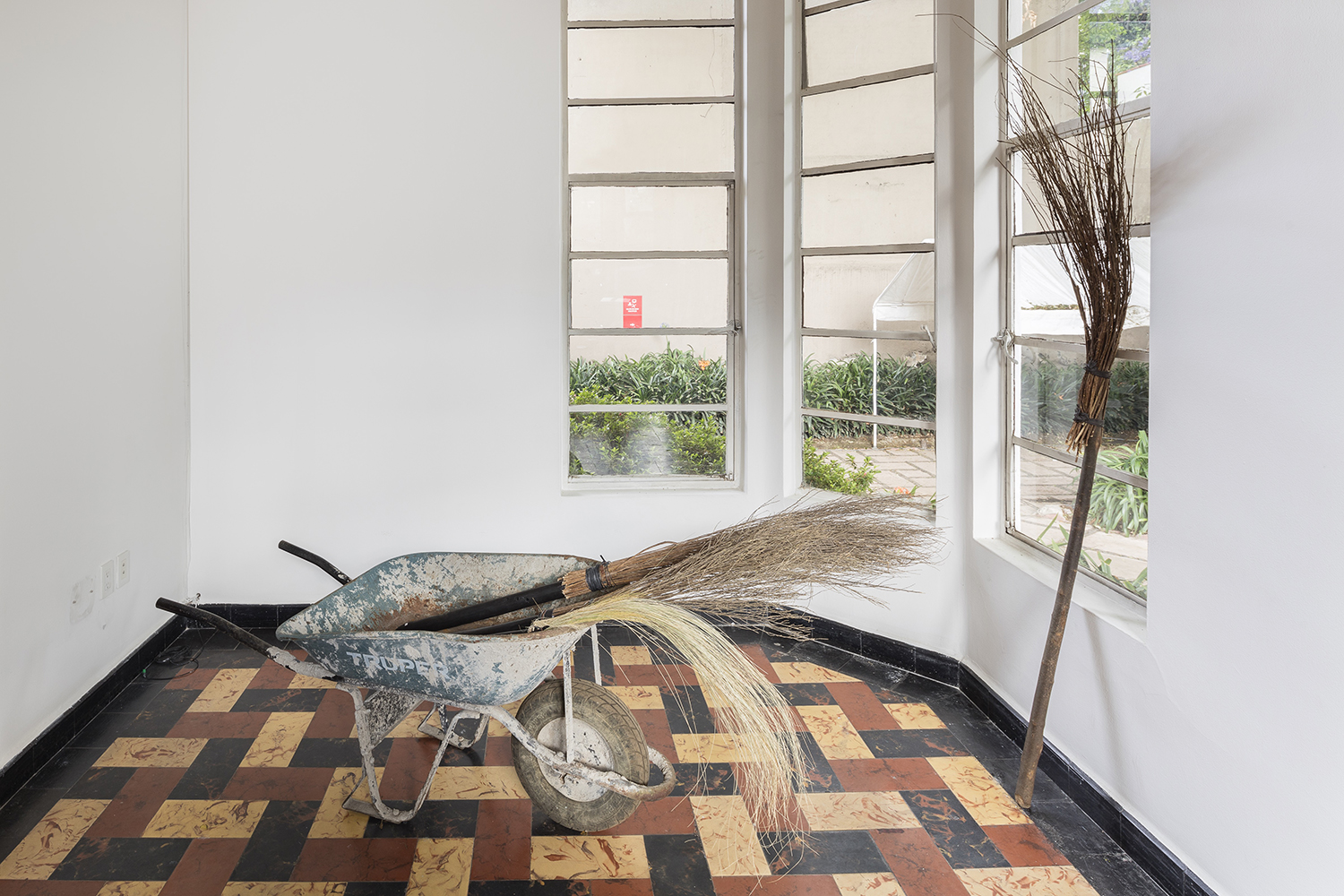
Fatalismo mágico:
Ópera sobre el deseo y la nostalgia en cuatro actos
Carlos Sandoval & Mariana Castillo Deball.
Photo: Abigail Enzaldo.
LOS CUATRO PERSONAJES DE FATALISMO MÁGICO
LA BARRENDERA
De niña fue trabajadora doméstica y jardinera local. "Arreglaba árboles", nos cuenta, "y aflojaba tierra, cortaba el pasto, antes de ser contratada como barrendera de planta". A la cinco de la mañana emprende camino a la bodega, de donde saca su carretilla, su escoba y sus "marinas", dos enormes láminas de langosta con las que recoge los polvos que no se le pegan a la escoba. Barre el mismo tramo de calle desde hace 28 años. Cuando la escoba está seca no barre bien y Lety la moja de vez en vez "para que agarre". Decidimos sustituir el palo de la escoba por una flauta de barro negro (porque el acto de barrer es como un Mantra de caricias: nos pone a meditar, a silbar o a susurrar un canto). Adornamos las flautas con espigas de las lomas de San Lorenzo y por eso parecen pinceles, con los que la barrendera al parecer acaricia la calle en vez de barrerla. De vez en vez toca la flauta, pero los vecinos no se percatan de nada. Sólo le dicen "¡Buenos días doña!" seguidas por un par de perros lagañosos y resignados.
LOS MORILLEROS
Los morillos eran los lápices del cerro. Los caballos morilleros marcaban con ellos las veredas de las lomas, como venas de grafito para amarrar macizo los bosques con la ciudad. Los campesinos eran expertos en todo: sabían sembrar, encontrar a los hijos perdidos de los borregos, construir techos con morillos, reconocer maderas y piedras; sabían cómo seguir huellas de los animales que caminan en reversa (ya extintos), usar las yerbas (para curar males o para ser más fértiles), leer las estrellas, predecir el clima y sobrevivir a los rayos. También sabían hablar con los perros y enseñar a los niños a desatar nudos mirando de frente al Sol. A veces eran hasta músicos y eran los únicos Filósofos del Cielo Envolvente. Don Antonio y don Juan eran dos de ellos, seguidos por un caballo morillero color café con leche pardeado que no sabía (y aún no sabe, el espíritu) ni a dónde van ni cuándo llegarán.
EL YERBERO
Doña Victoria, su abuela, curandera de manos huesudas, le arrebató de las manos una vara de membrillo a Juanito y con ella le dio su primera lección en el trasero, por haber casi destruido una Sábila a espadazos. Así, Juanito aprendió a respetar a las plantas como si fueran personas. Cuidar borregos en el bosque era un castigo en San Lorenzo y Juanito fue mandado de borreguero por haber reprobado en la primaria. Esta fue, irónicamente, su segunda gran escuela, ya que en su retiro de pastor-ermitaño, otros ascetas borregueros le enseñaron todo sobre las yerbas medicinales. Ahí conoció el cerro, sus rincones y sus yerbas. Ahora, ya de 70, camina con su hija Guadalupe hacia la cueva de San Pablocan y dentro de ella tocan las piedras-tambor. Con sus ofrendas y sus capillitas, San Pablocan es una protopirámide, o una iglesia dentro de un chupón, un hueco donde respiran a la vez los ríos subterráneos y las raíces de los árboles.
LA TORTILLERA DEL ORCÁULO
Su mamá le enseñó a hacer tortillas a la mala, azotándole las manos con un cable de luz si el comal se le vaciaba, ya que no toleraba "que se me desperdicie la leña, estúpida". "Mis vivencias me han llevado a transformar el dolor y las adversidades..." dice Rosa María, sobándose los tendones metálicos de sus manos, o las marcas que le hizo su madre en el corazón, "...hoy agradezco todo lo triste y lo doloroso que me sucedió. He aprendido y he perdonado. Mis vergüenzas se han limpiado. Tomo té de tabaquillo que refresca los pensamientos empolvados, oxidados". El oráculo es una carreta-tortillería que carga un comal grabado con el Oráculo de las Tortillas. Los poderes del oráculo son: "Poder Destino", "Poder Guía", "Poder Opuesto" y "Poder Aliado". A través de estos poderes, las tortillas hablan distinto, dependiendo si se inflan o no se inflan en el comal. Nadie sabe qué energías milenarias determinan que se infle una tortilla o no. Pero Rosa María lo sabe. Después de su lectura, las clientas se llevan sus tortillas vaporosas y se las comen con sal de mar, o así nada más, sin fósiles, como botones de tulipanes.

Fatalismo mágico:
Ópera sobre el deseo y la nostalgia en cuatro actos
Carlos Sandoval & Mariana Castillo Deball.
Photo: Abigail Enzaldo.
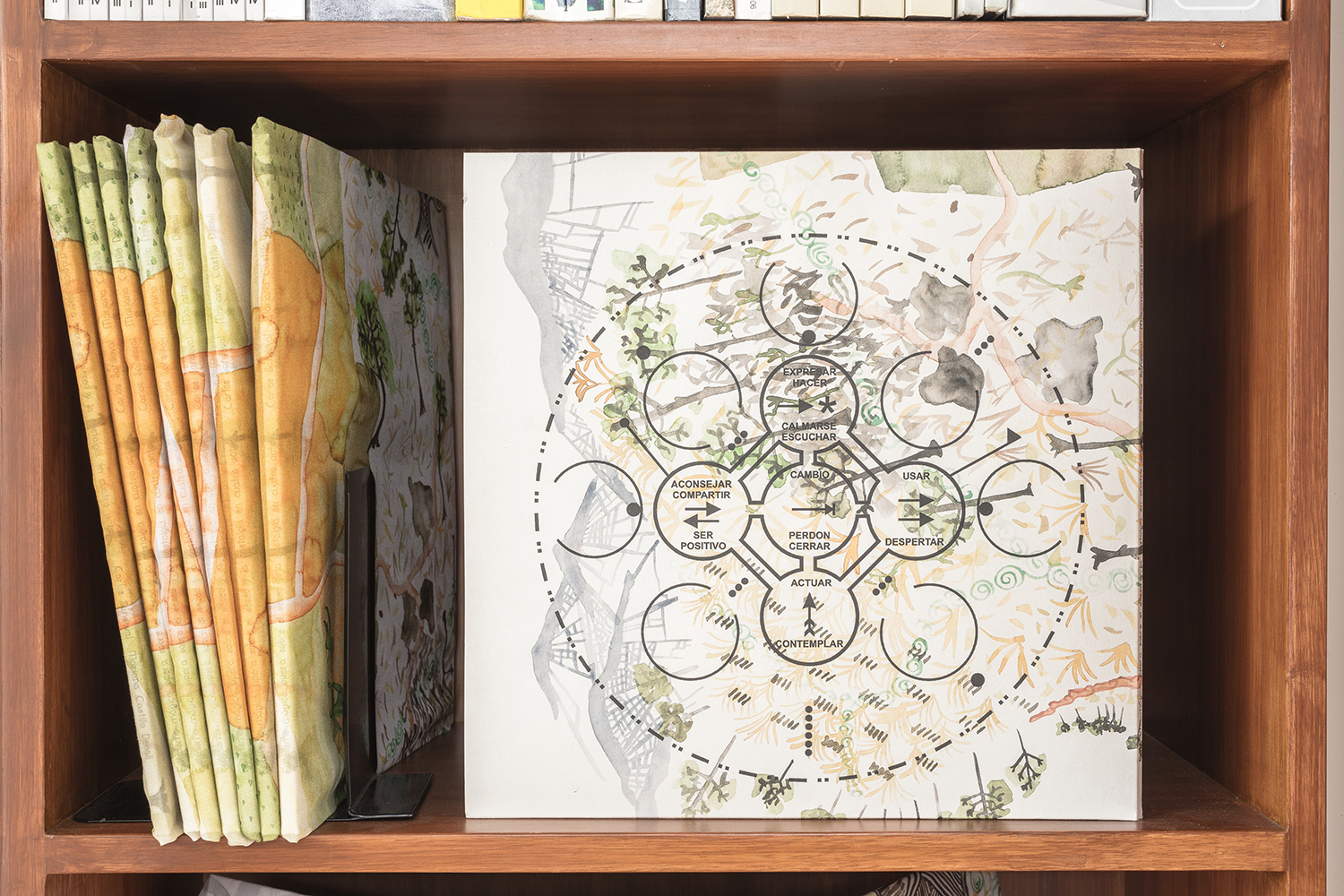
Fatalismo mágico:
Ópera sobre el deseo y la nostalgia en cuatro actos
Carlos Sandoval & Mariana Castillo Deball.
Photo: Abigail Enzaldo.

Fatalismo mágico:
Ópera sobre el deseo y la nostalgia en cuatro actos
Carlos Sandoval & Mariana Castillo Deball.
Photo: Abigail Enzaldo.
Dibújame un mapa de lo que no verás.
Casa del Lago, Mexico City, MX
Mariana Castillo Deball, Carlos Sandoval
June 8 – November 17, 2024
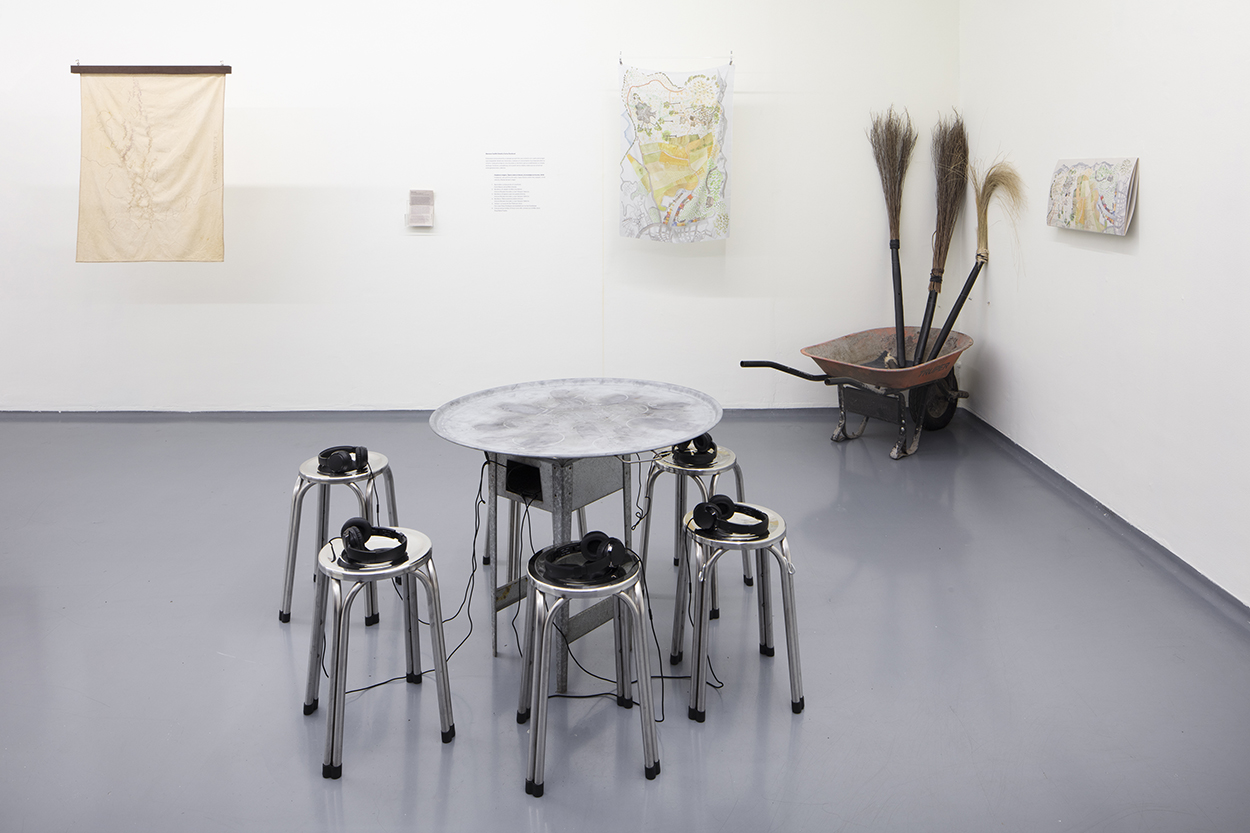
Fatalismo Mágico.
Opera about desire and nostalgia in four acts.
Casa del Lago, Mexico City
Mariana Castillo Deball, Carlos Sandoval and Fundación Alumnos 47
June 8 – November 17, 2024
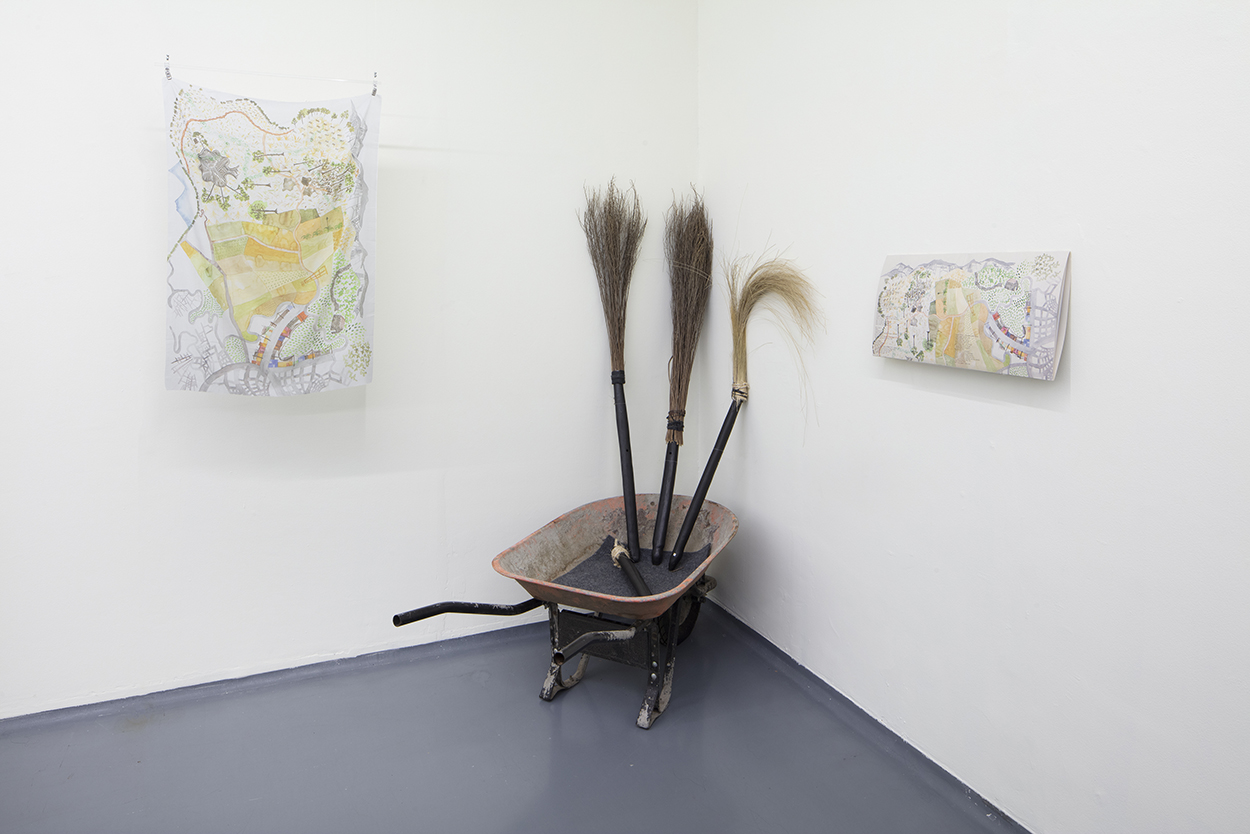
Fatalismo Mágico.
Opera about desire and nostalgia in four acts.
Casa del Lago, Mexico City
Mariana Castillo Deball, Carlos Sandoval and Fundación Alumnos 47
June 8 – November 17, 2024
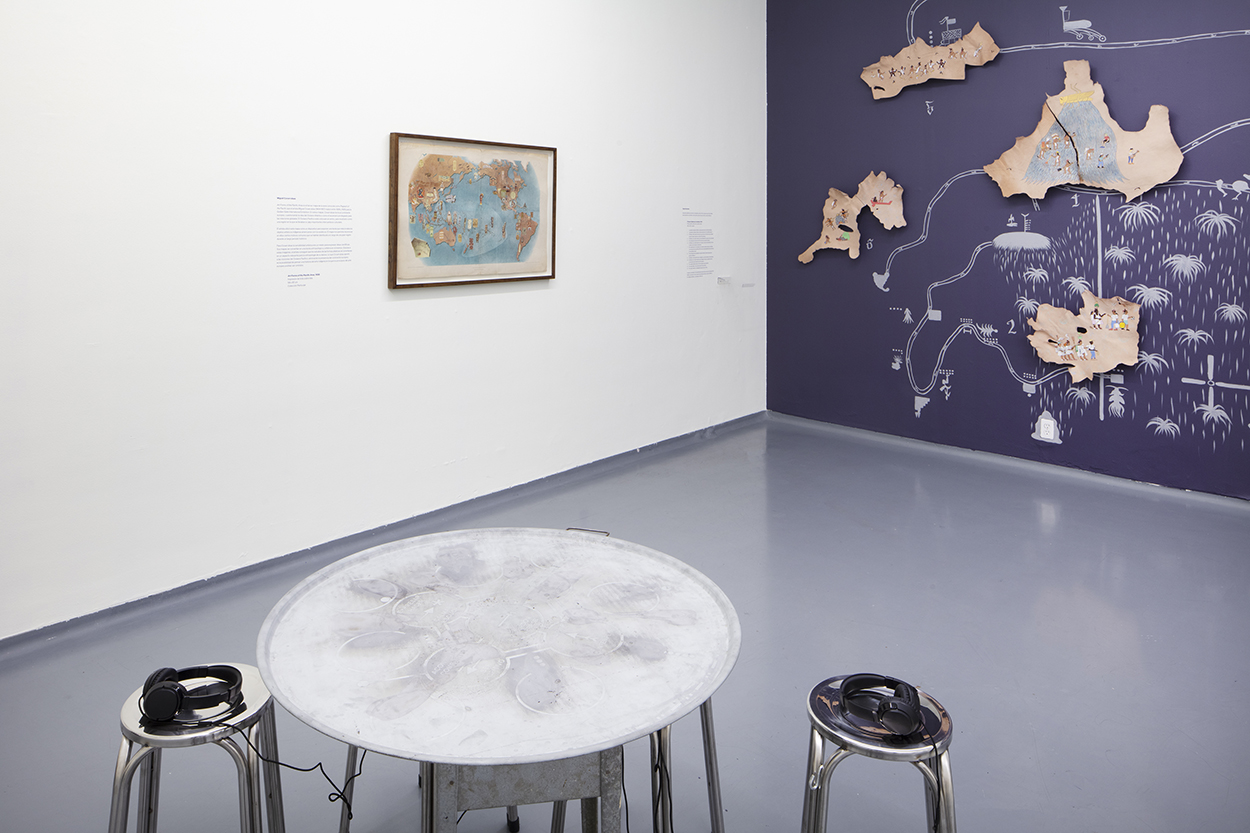
Fatalismo Mágico.
Opera about desire and nostalgia in four acts.
Casa del Lago, Mexico City
Mariana Castillo Deball, Carlos Sandoval and Fundación Alumnos 47
June 8 – November 17, 2024

Fatalismo Mágico.
Opera about desire and nostalgia in four acts.
Casa del Lago, Mexico City
Mariana Castillo Deball, Carlos Sandoval and Fundación Alumnos 47
June 8 – November 17, 2024
Viertel nach Schatten
(15 minutes after the shadows)
Mariana Castillo Deball and Carlos Sandoval
Kunstverein Graz, Austria, 2016

Viertel nach Schatten, 2016, Kunstverein Graz, Austria.
Mariana Castillo Deball and Carlos Sandoval
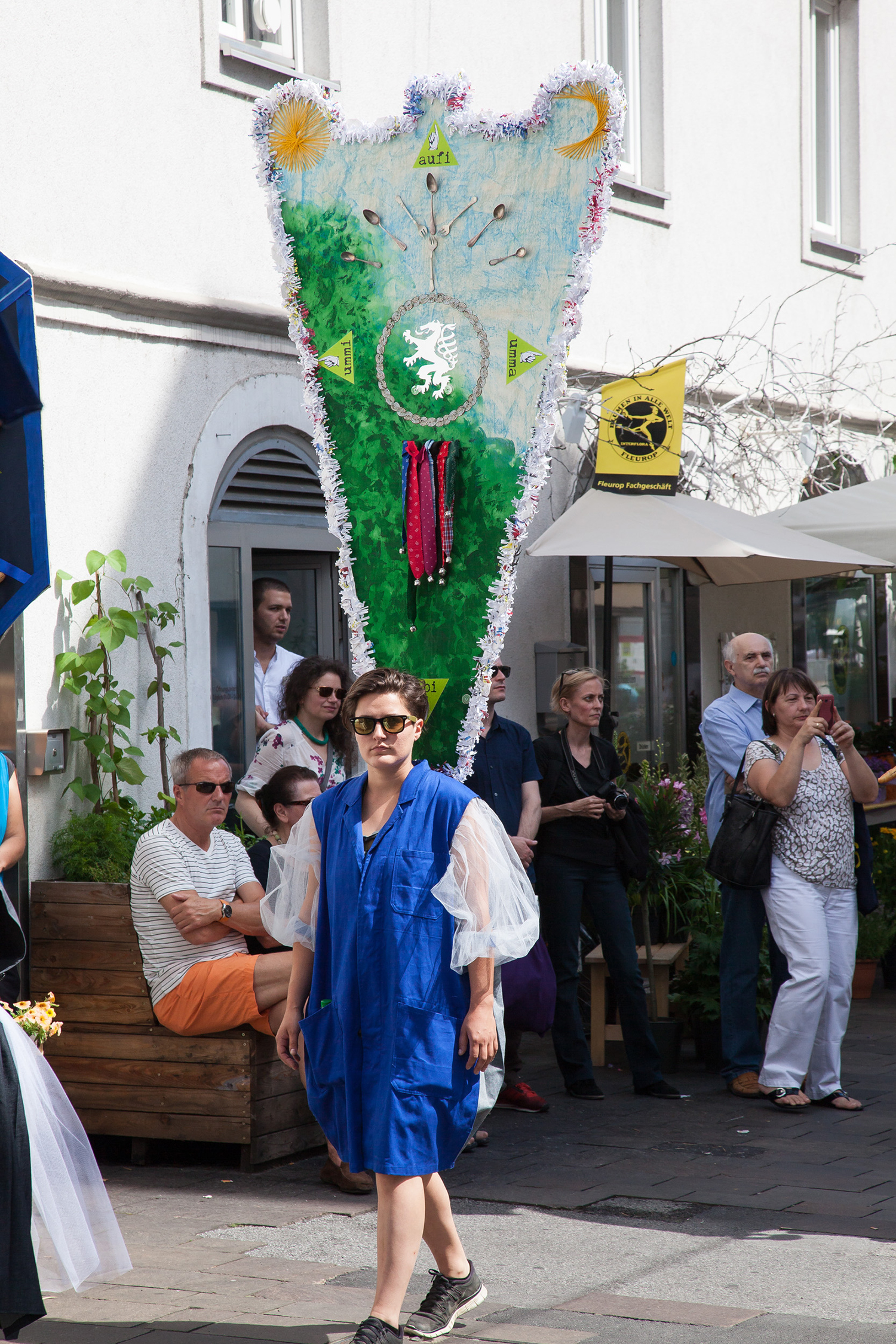
Viertel nach Schatten, 2016, Kunstverein Graz, Austria.
Mariana Castillo Deball and Carlos Sandoval
Viertel nach Schatten (15 minutes after the shadows) is inspired by preserved Alps customs and traditions. More specifically in the Austrian-Salzburg Lauf traditions. During our first visit to Graz we intuitively noticed a procession-oriented street planning and a clear urban hierarchical architecture specifically in relationship to the placement of churches. We didn’t need to scratch the surface much, after few conversations with locals our intuitions were confirmed: despite the Christian influence and its own culture of processions, we found out about a mix of secular and pagan living Lauf traditions that are celebrated in the area as well.
Lauf traditions unlike processions, are linked with an Early-Middle-Ages ambivalent female character (the Perchta) who represents both darkness and brightness, the passing of time, the planetary cycles, the return of life. This mystical-cosmological celebration (linked with the shortest day of the year and the return of light) was censored by the Christian Church around the 17th century and hacked-adopted-accepted about a century later. Nowadays a Perchtenlauf (a “Walk of many Perchtas”) is an “arbitrary” mix of Christian logos, oral tradition, contemporary, sub-urban social-tissues, ancient traditions, cultural resistance and planetary loops. With our Lauf we want to link our “inherited” Mexican procession culture (which are similar in that they are also Christian and Pre-Christian hybrids in origin) with collective-creativity, history and tradition.

Viertel nach Schatten, 2016, Kunstverein Graz, Austria.
Mariana Castillo Deball and Carlos Sandoval

Viertel nach Schatten, 2016, Kunstverein Graz, Austria.
Mariana Castillo Deball and Carlos Sandoval

Viertel nach Schatten, 2016, Kunstverein Graz, Austria.
Mariana Castillo Deball and Carlos Sandoval

Viertel nach Schatten, 2016, Kunstverein Graz, Austria.
Mariana Castillo Deball and Carlos Sandoval
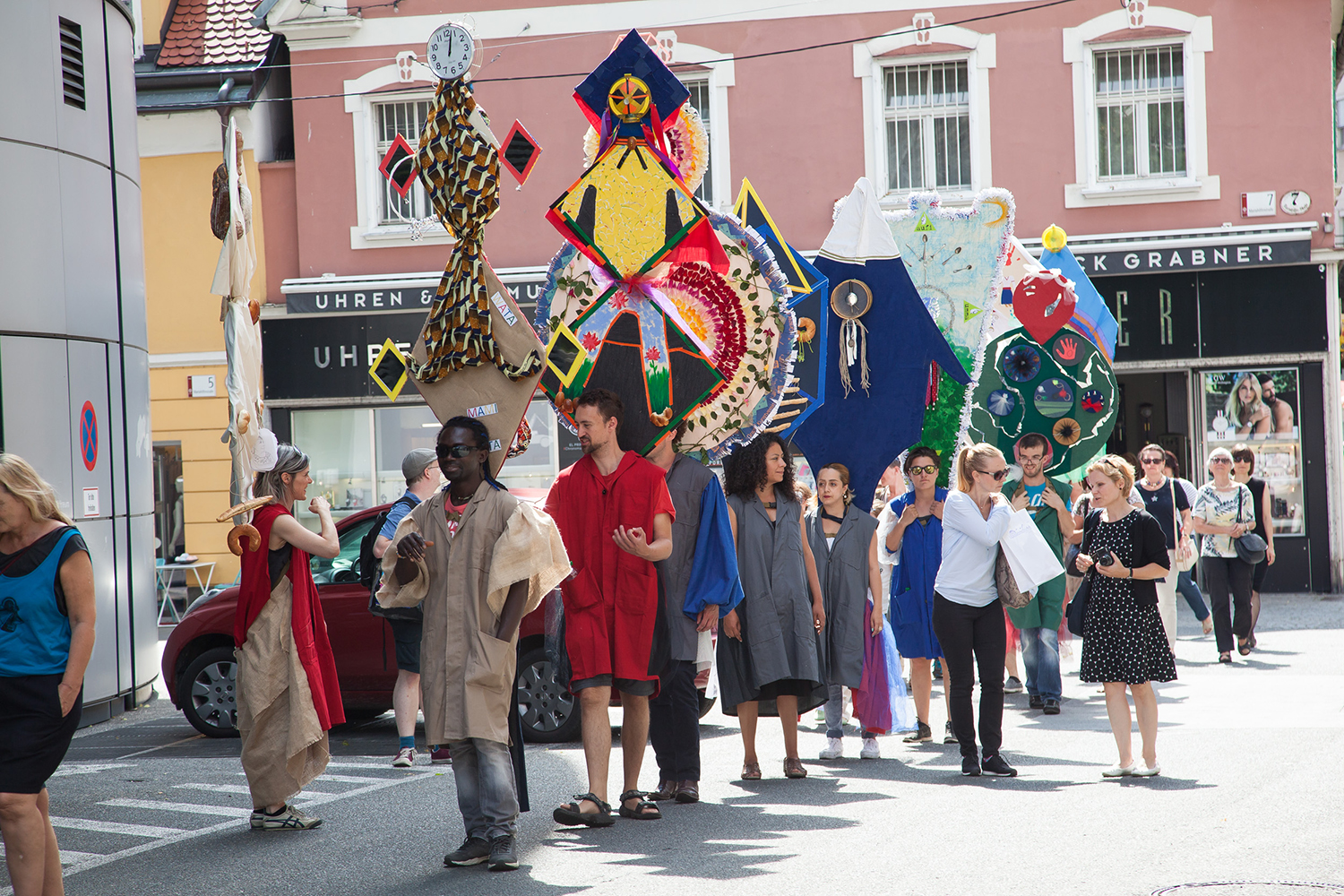
Viertel nach Schatten, 2016, Kunstverein Graz, Austria.
Mariana Castillo Deball and Carlos Sandoval
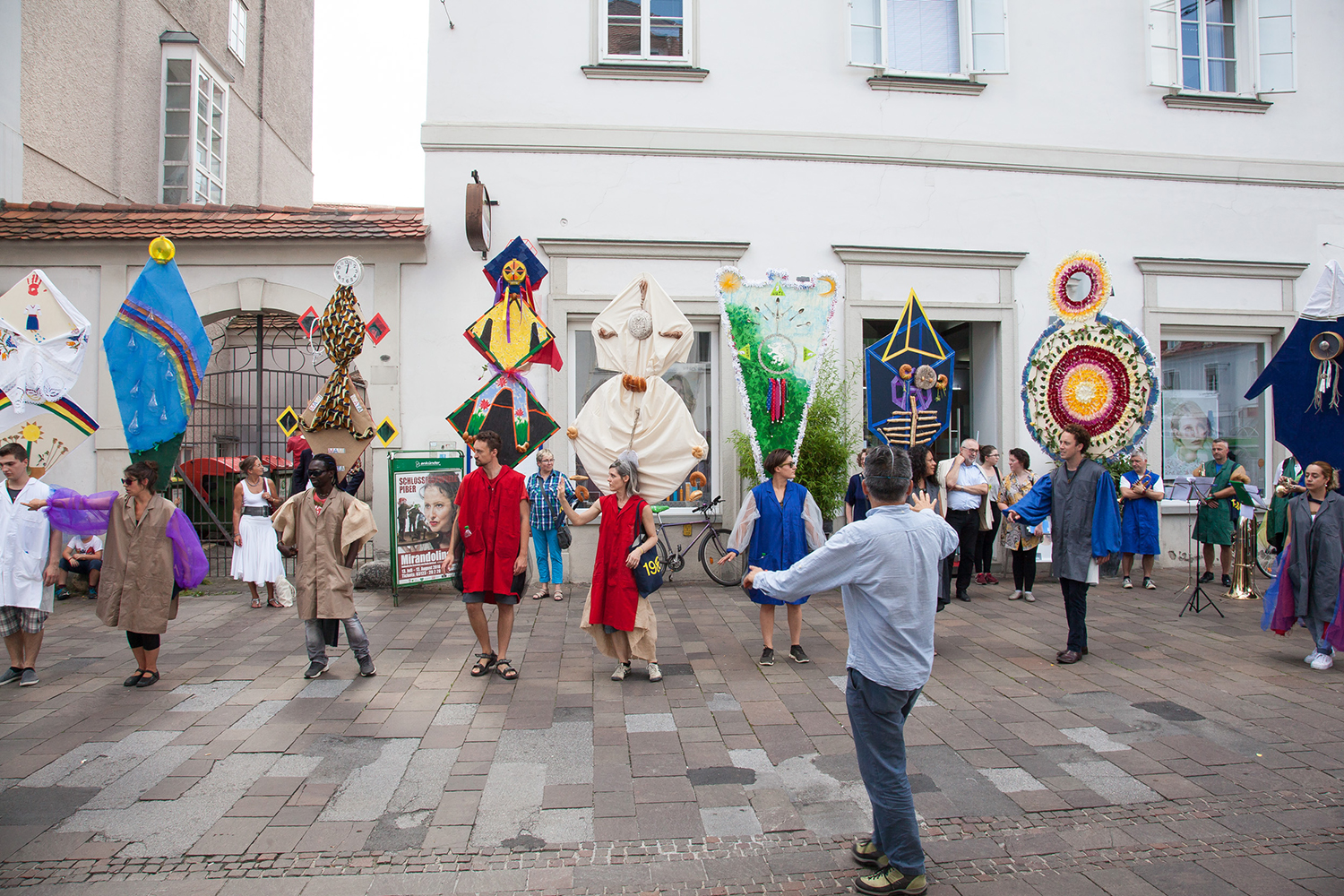
Viertel nach Schatten, 2016, Kunstverein Graz, Austria.
Mariana Castillo Deball and Carlos Sandoval
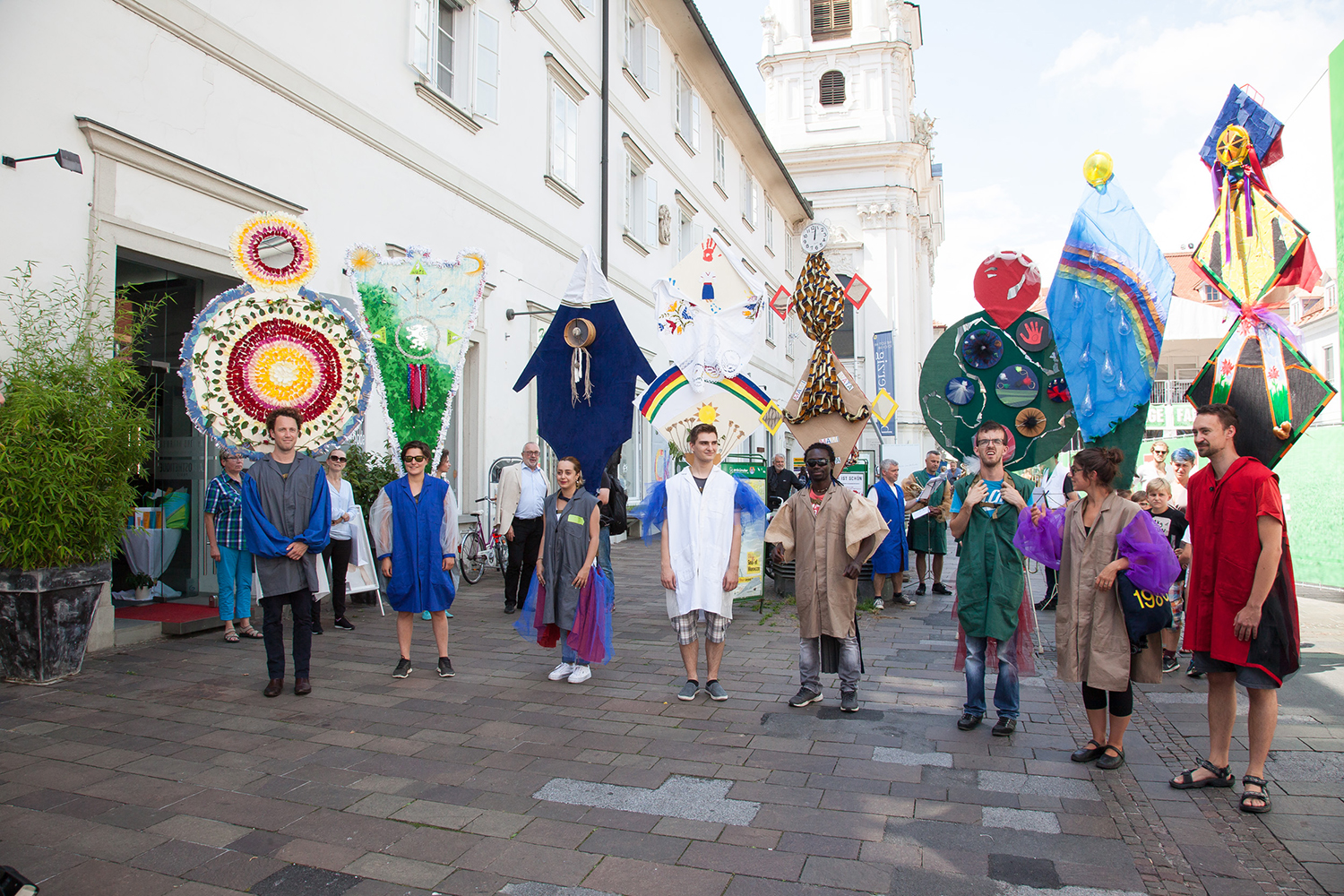
Viertel nach Schatten, 2016, Kunstverein Graz, Austria.
Mariana Castillo Deball and Carlos Sandoval
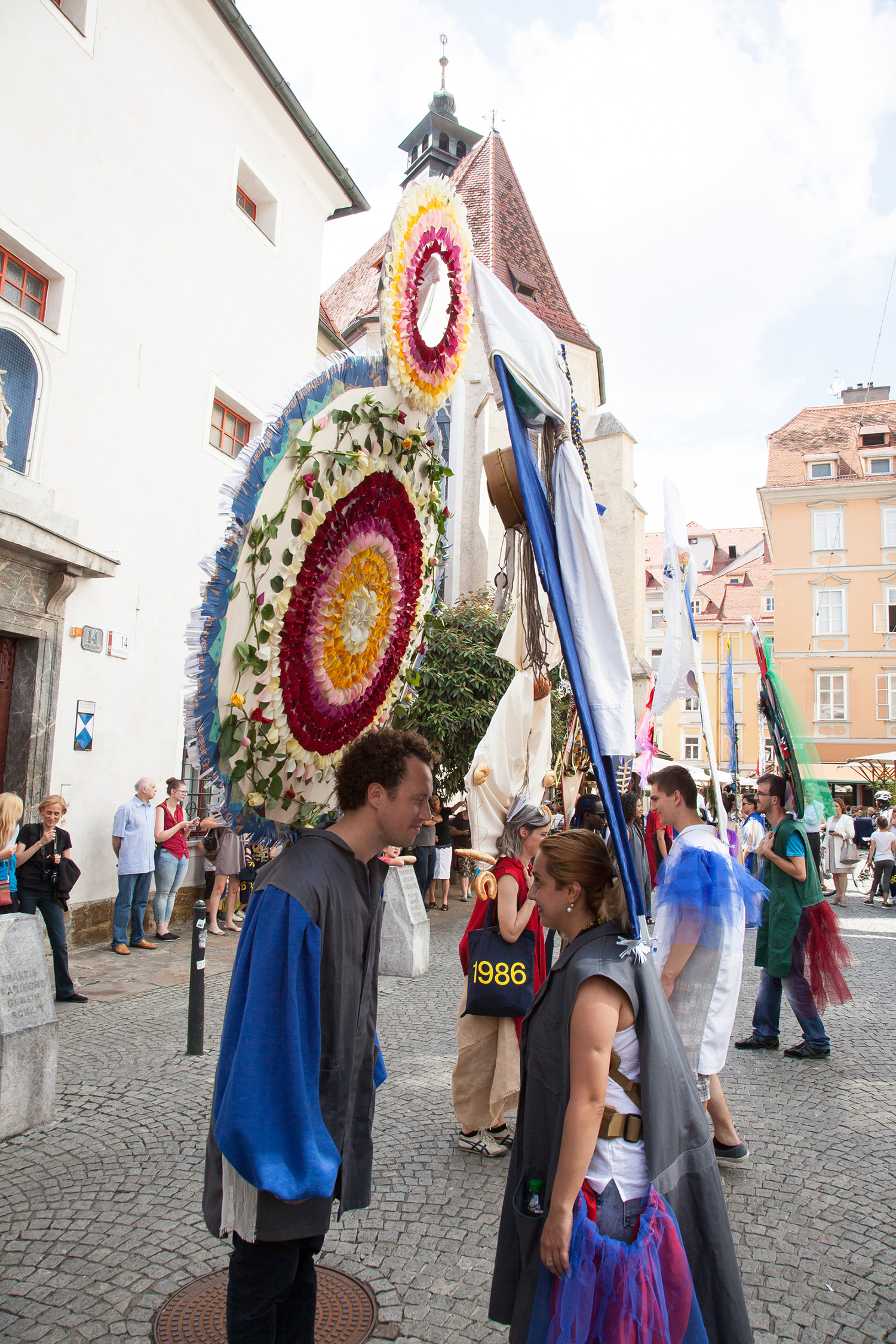
Viertel nach Schatten, 2016, Kunstverein Graz, Austria.
Mariana Castillo Deball and Carlos Sandoval

Viertel nach Schatten, 2016, Kunstverein Graz, Austria.
Mariana Castillo Deball and Carlos Sandoval
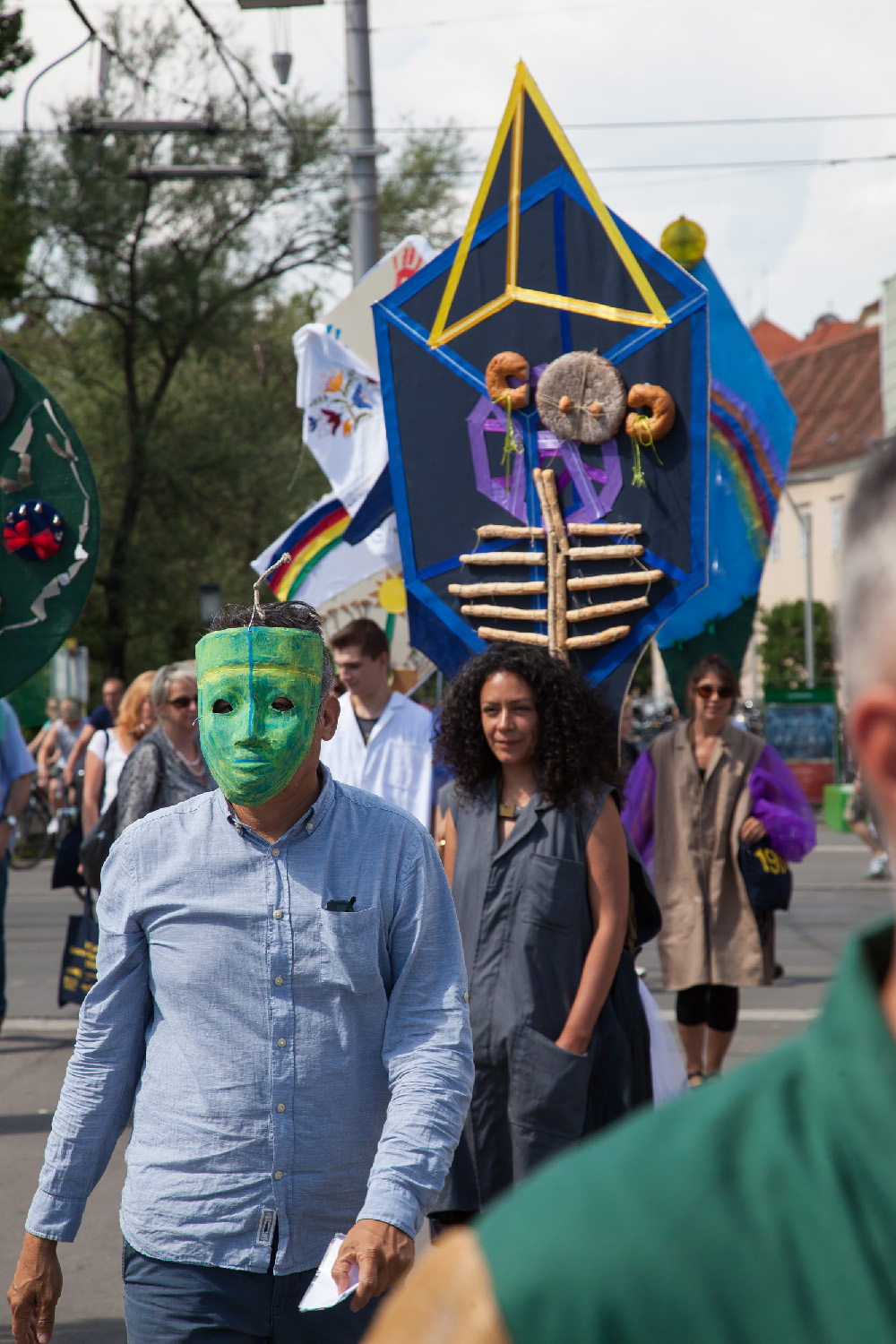
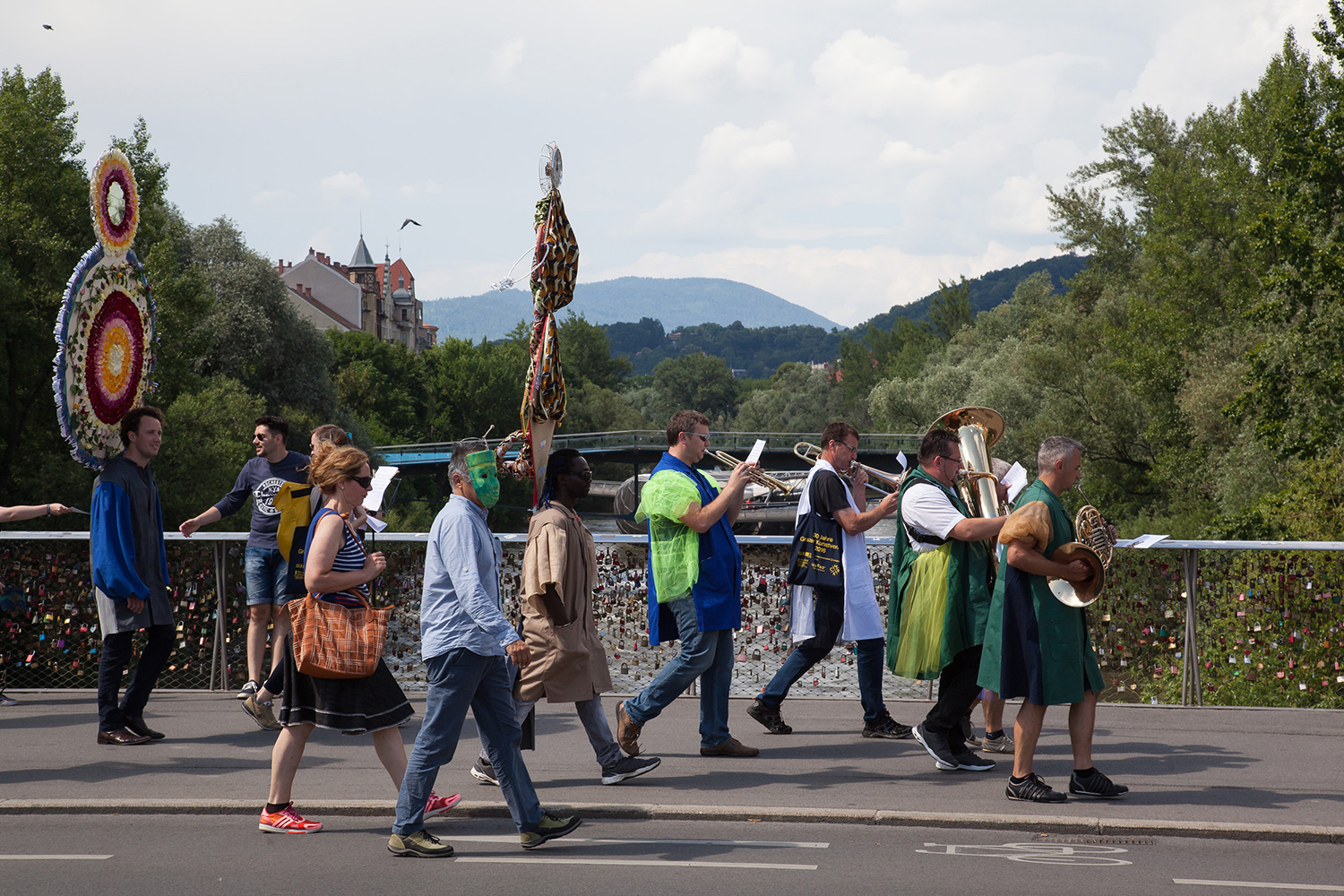
Viertel nach Schatten, 2016, Kunstverein Graz, Austria.
Mariana Castillo Deball and Carlos Sandoval
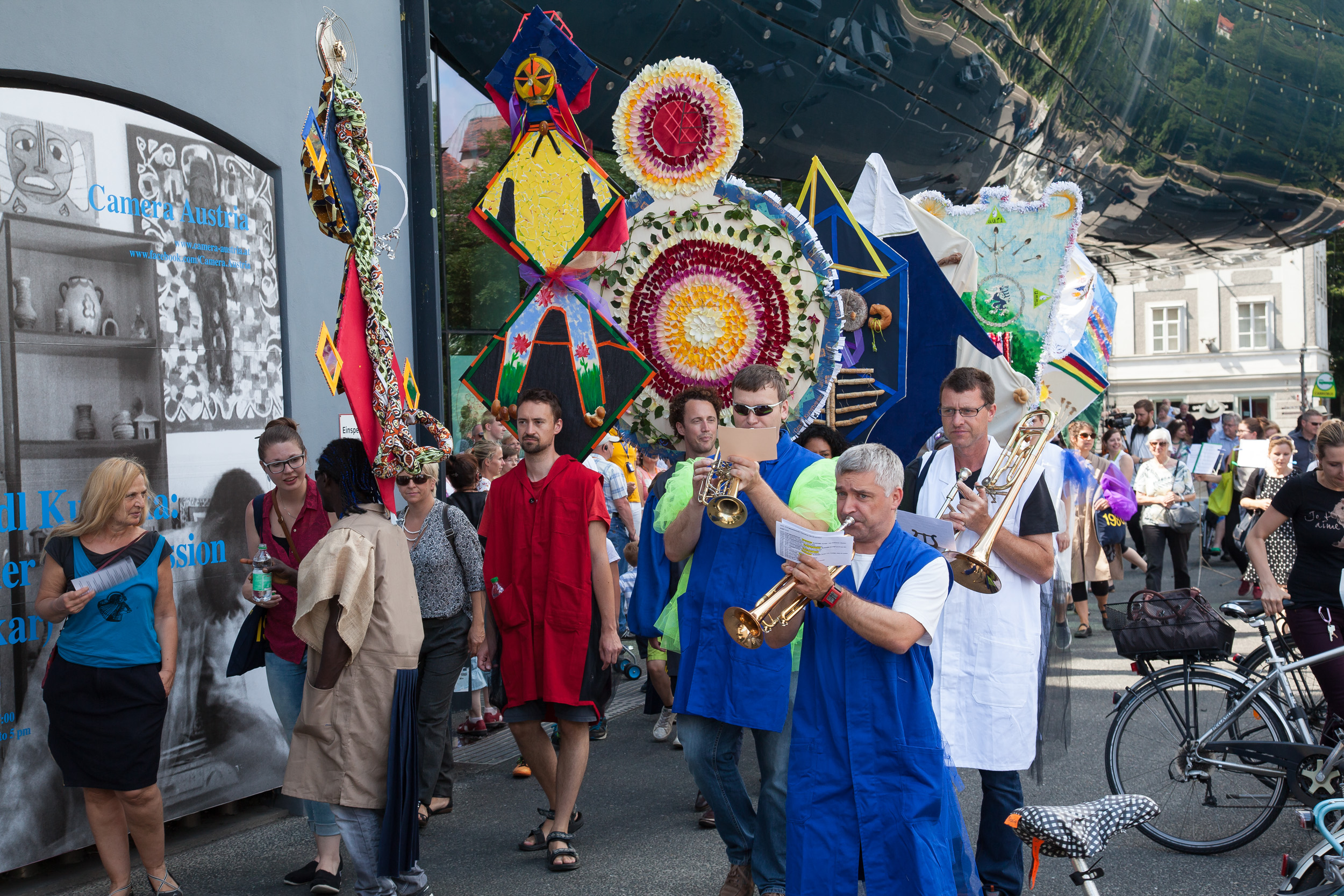
Contemporary composer Carlos Sandoval, composed scores for four of the church bell towers, which accompanied the four dances. The music was also played by a brass band and danced along by the performers, thus creating a musical score that surrounding the city.

Viertel nach Schatten, 2016, Kunstverein Graz, Austria.
Mariana Castillo Deball and Carlos Sandoval
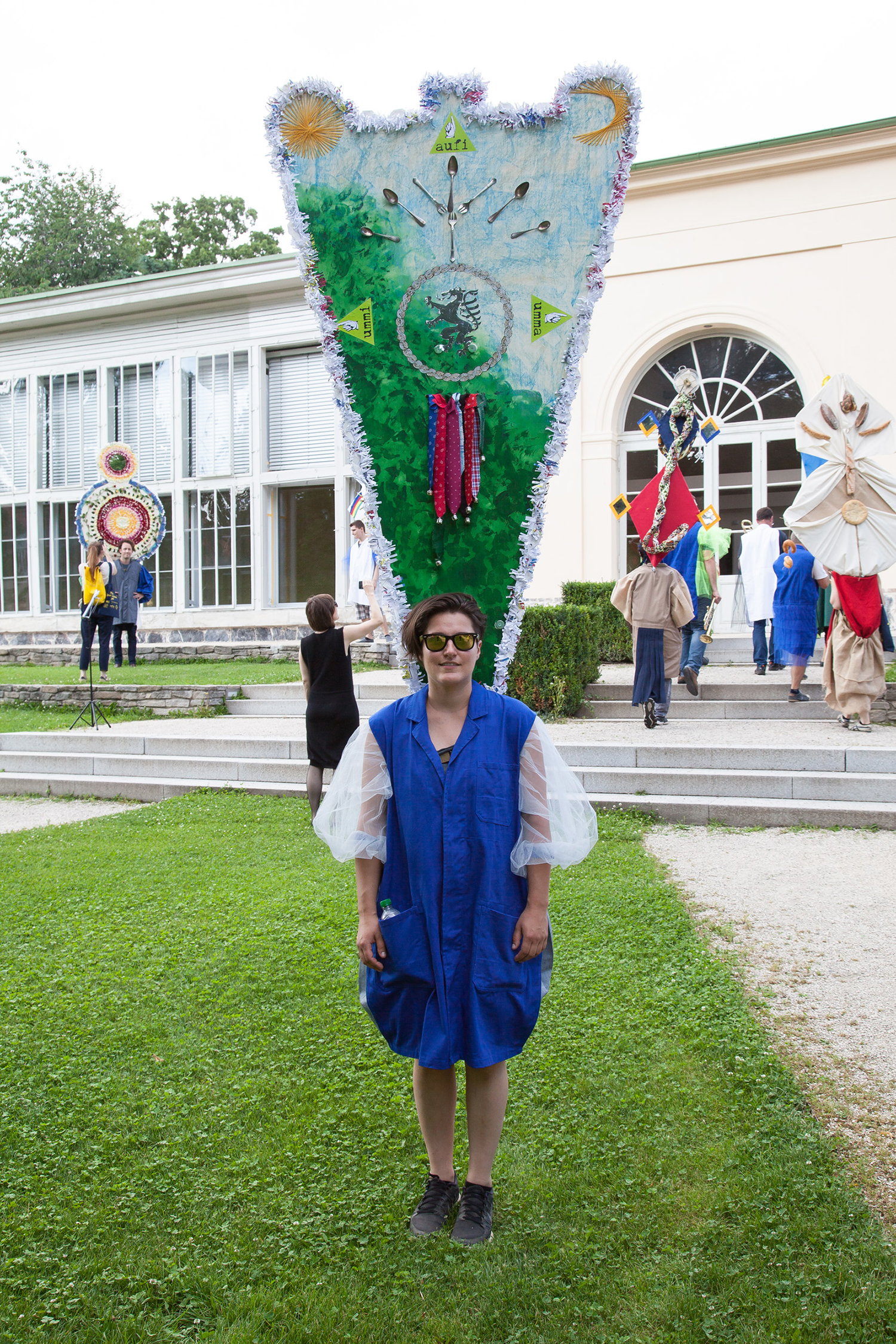
Viertel nach Schatten, 2016, Kunstverein Graz, Austria.
Mariana Castillo Deball and Carlos Sandoval

Viertel nach Schatten, 2016, Kunstverein Graz, Austria.
Mariana Castillo Deball and Carlos Sandoval
The project’s constumes are loosely based in the old tradition of the Perchtenlauf. These traditional costumes included large ornate panels as well as furs and masks of mythological beasts and were divided into the “good” and the “bad”. Our project most resembles the “schön Perchten” or “good” Perchten, which are also known as the “tablet” or “mirror’ Perchten, for their large panels and reflective surfaces.
The Perchtenlauf was, and in some places still is, celebrated on the first of March and marks the end of winter and the arrival of spring. Its object is to scare away the evil spirits of winter and wake up the good spirits of spring
